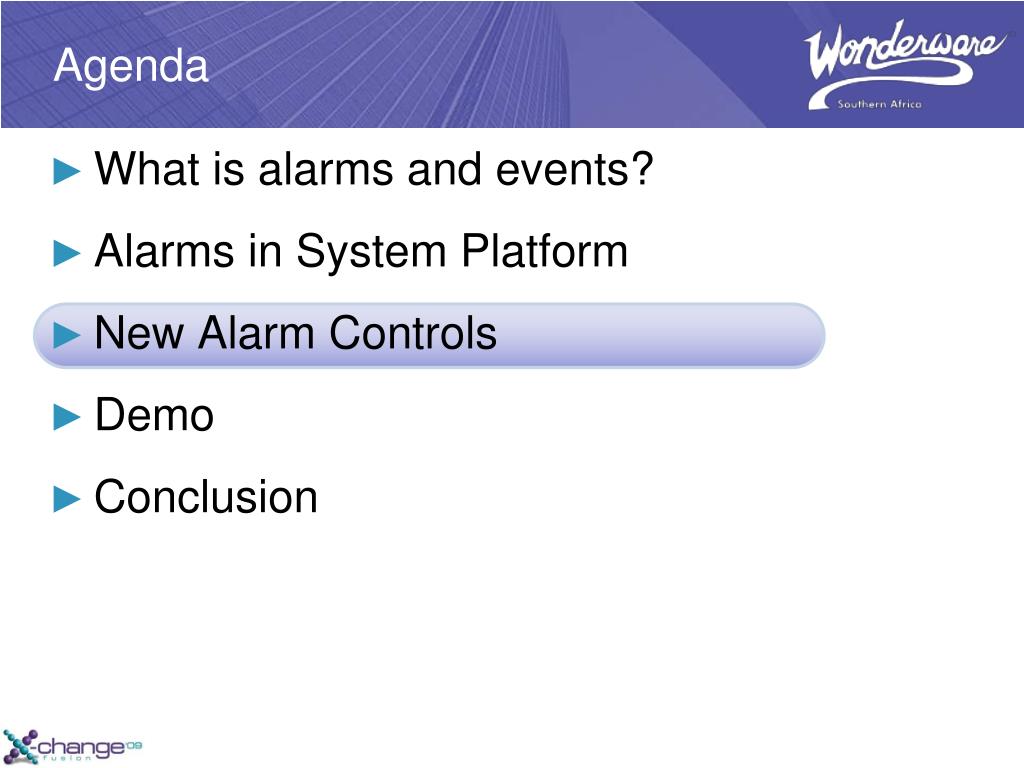

It demonstrates usages for applying alarm sounds, alarm shelving as well as state based alarm suppression. This video is a follow up to the previous video on Situational Awareness Actionable Alarm Management. Generally speaking alarms that require operator intervention or cause certain actions to take place in the PLC should be latched on in the PLC, in which case you don't likely need something special for the HMI. This could be an audible alarm, a flashing light, an email or text message, or an alarm on an Intouch SCADA screen. Situational Awareness Actionable Alarming Revisited. the operators configured name and the acknowledgment method in the alarm comment.

RROs provide pre-programmed functionality. This is definitely something situation dependent. SMS and email alarming for Wonderware System Platform and Intouch. Remote personnel are able to view alarm information, acknowledge alarms and enter comments, all from a mobile device. I can see some situations where you might have the alarm self-reset, but also want to ensure it gets logged when it happens. However, if it's an event that's chattering, you might only get 1 alarm in the HMI but the event could have happened multiple times (depending on how fast the HMI/SCADA updates).ĭepending on the situation, what might work best is to have a separate bit that's just for the HMI logging and still latch on (as needed) a bit in the controller that's used for other logic. That way the bit will always stay on until the HMI notices. Going a slightly different direction, if you wanted to make sure that an event got logged, you could have the PLC set/latch a bit on that the event happens, and have the HMI/SCADA reset/unlatch/turn off that bit.


 0 kommentar(er)
0 kommentar(er)
